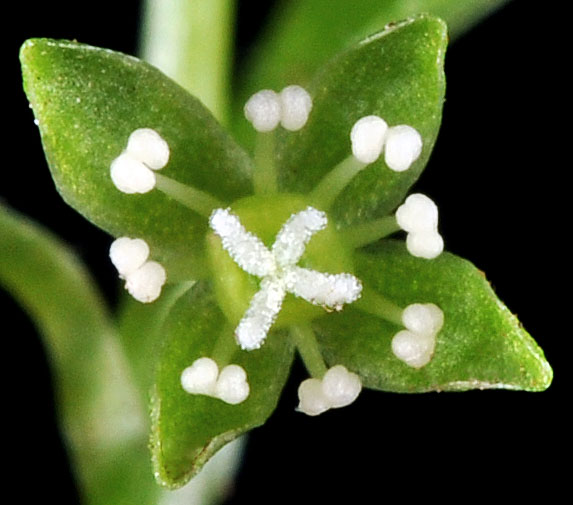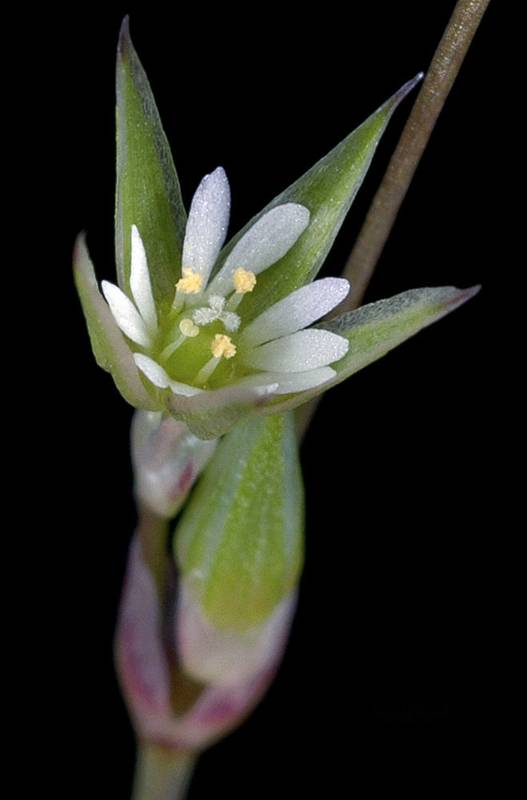Stellaria obtusa
Stellaria nitens
blunt-sepaled starwort
shiny starwort
Leaves opposite, only on the lower half of the stem, linear or linear lanceolate, 5-10 mm. long;
basal leaves with a small ovate blade 3-8 mm. long and a petiole at least as long.
Flowers in a large, open inflorescence with membranous bracts and filiform pedicels;
sepals 5, 3-4 mm. long, lanceolate, pointed, 3-nerved, with transparent margins;
petals wanting or very small.
Capsule narrowly cylindric-ovoid, shorter than the sepals.
Stellaria obtusa
Stellaria nitens
Occurring on both sides of the Cascades in Washington; British Columbia to California, east to the Rocky Mountains.
Occurring on both sides of the Cascades crest in Washington; British Columbia to Baja California, east to Montana, Idaho, Utah, and Arizona.
- Local floras:
BC,
CA,
OR,
WA
- Local Web sites:
CalFlora,
CalPhotos,
Flora NW,
PNW Herbaria
WildflowerSearch
iNaturalist (observations)
USDA Plants Database
- LBJ Wildflower Center
- SEINet
- Plants of the World Online
- Encyclopedia of Life
- Wikipedia
- Google Image Search
- Local floras:
BC,
CA,
OR,
WA
- Local Web sites:
CalFlora,
CalPhotos,
Flora NW,
PNW Herbaria
WildflowerSearch
iNaturalist (observations)
USDA Plants Database
- LBJ Wildflower Center
- SEINet
- Plants of the World Online
- Encyclopedia of Life
- Wikipedia
- Google Image Search



